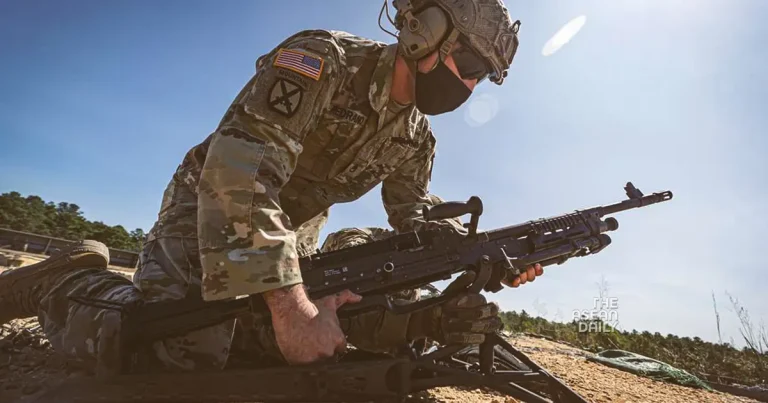28-2-2024 (WASHINGTON) The US Army is set to cut 24,000 positions, reflecting a significant shift in focus from counterterrorism efforts to addressing rising military threats posed by China and Russia, according to a newly released Army document.
These reductions align with the national defence strategy initiated by former President Donald Trump and largely endorsed by the Biden administration. The strategy places emphasis on countering emerging threats from an increasingly assertive Russia and China.
The Army’s size expanded to nearly 600,000 during the prolonged conflicts in Afghanistan and Iraq. However, with the conclusion of these conflicts, a gradual reduction in troop numbers has ensued as soldiers return to garrison.
The reported job cuts also implicitly acknowledge recruitment challenges faced not only by the Army but also by other branches of the military. In 2023, the Army, Navy, and Air Force all failed to meet their respective recruiting goals.
The newly released document outlines that these personnel reductions aim to “allow the Army to narrow the gap between force structure, designed for 494,000 soldiers, and the current active-duty end strength, set by law at 445,000.” The goal now is to achieve an Army end strength of 470,000.
Defence department officials cite several issues affecting recruitment, including a decline in the percentage of young Americans qualifying and showing interest in military service. A low unemployment rate has also provided alternative employment options for young people.
The document states that the Army’s approach will involve reducing excess, largely unmanned force structures while building new formations equipped for large-scale combat operations. This realignment aims to ensure that Army formations are appropriately filled to maintain a high state of readiness.
In 2023, it was announced that the Army planned to cut around 3,000 positions from its Special Operations forces. An official confirmed that this number is included in the broader reduction of 24,000 positions.
While the Pentagon shifts its focus to preparing for potential great power conflicts, recent events in the Middle East underscore the need for military capabilities in both counterterrorism and conventional warfare. The Army faces the challenge of maintaining readiness amid these evolving dynamics, coupled with budgetary uncertainties since 2011 when spending caps were instituted.
General Randy George, the Army chief of staff, emphasized that the reductions are targeted at capabilities that won’t contribute to success on the battlefield. He highlighted the Army’s commitment to growing and enhancing capabilities, including those focused on protecting troops and civilians from evolving threats like drones, rockets, and ballistic missile attacks.




